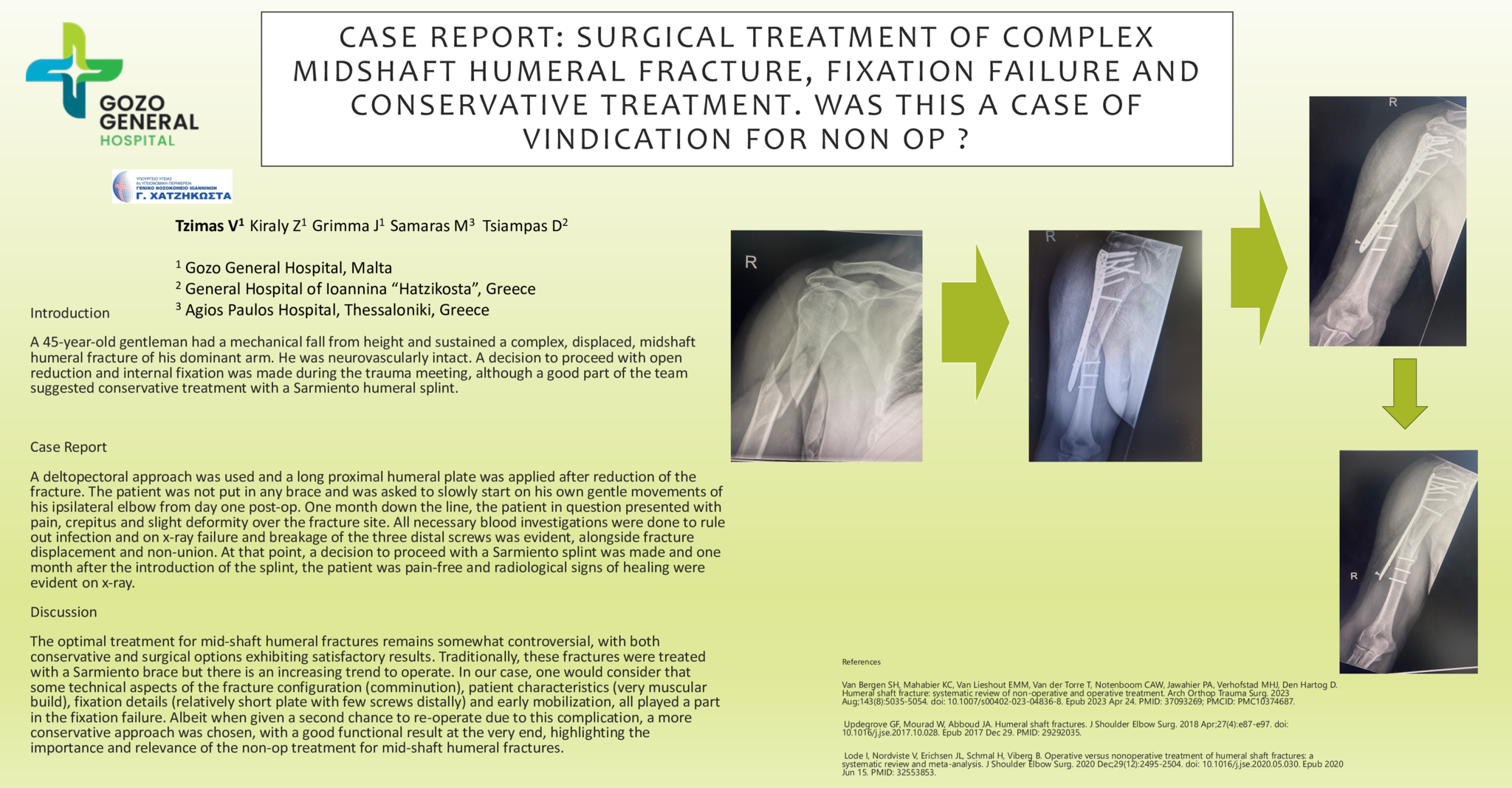Introduction
A 45-year-old gentleman had a mechanical fall from height and sustained a complex, displaced, midshaft humeral fracture of his dominant arm. He was neurovascularly intact. A decision to proceed with open reduction and internal fixation was made during the trauma meeting, although a good part of the team suggested conservative treatment with a Sarmiento humeral splint.
Case Report
A deltopectoral approach was used and a long proximal humeral plate was applied after reduction of the fracture. The patient was not put in any brace and was asked to slowly start on his own gentle movements of his ipsilateral elbow from day one post-op. One month down the line, the patient in question presented with pain, crepitus and slight deformity over the fracture site. All necessary blood investigations were done to rule out infection and on x-ray failure and breakage of the three distal screws was evident, alongside fracture displacement and non-union. At that point, a decision to proceed with a Sarmiento splint was made and one month after the introduction of the splint, the patient was pain-free and radiological signs of healing were evident on x-ray.
Discussion
The optimal treatment for mid-shaft humeral fractures remains somewhat controversial, with both conservative and surgical options exhibiting satisfactory results. Traditionally, these fractures were treated with a Sarmiento brace but there is an increasing trend to operate. In our case, one would consider that some technical aspects of the fracture configuration (comminution), patient characteristics (very muscular build), fixation details (relatively short plate with few screws distally) and early mobilization, all played a part in the fixation failure. Albeit when given a second chance to re-operate due to this complication, a more conservative approach was chosen, with a good functional result at the very end, highlighting the importance and relevance of the non-op treatment for mid-shaft humeral fractures.
- 2 προβολές




